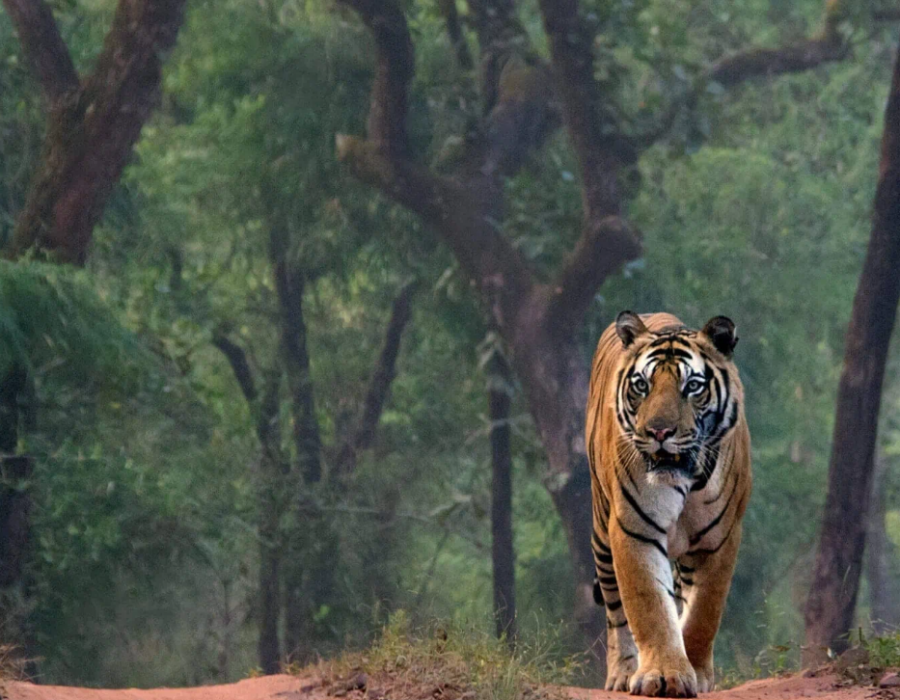Ranthambore National Park, nestled in Rajasthan’s Sawai Madhopur district, is one of the most sought-after destinations for wildlife lovers and adventure seekers. Famous for its thriving population of Royal Bengal Tigers, it offers an unmatched blend of natural beauty and historical splendor. A Tiger Safari Ranthambore promises an unforgettable journey into one of India’s most remarkable wildlife habitats, where every moment is filled with the thrill of discovery.
The Wild Heart of Rajasthan
Spread across more than 1,300 square kilometers, Ranthambore is a mesmerizing tapestry of dense forests, open meadows, craggy hilltops, and shimmering lakes. Once the royal hunting reserve of Jaipur’s Maharajas, it is now a protected area under India’s Project Tiger initiative. The park serves as a crucial sanctuary for India’s tigers and many other species that flourish within its biodiversity-rich environment.
When you embark on a jeep or canter safari here, the experience is nothing short of exhilarating. The calls of peacocks, rustling of leaves, and the faint alarm sounds of spotted deer heighten the anticipation as you explore deeper into the forest. Apart from tigers, Ranthambore is home to leopards, sloth bears, crocodiles, wild boars, mongooses, and a rich variety of birdlife, creating a living symphony of the wild.
The crowning jewel of the park is the ancient Ranthambore Fort, a UNESCO World Heritage Site. Dating back to the 10th century, this fort stands tall above the forests, bearing silent testimony to Rajasthan’s royal past while overlooking panoramic landscapes teeming with life.
A Paradise for Wildlife Photographers
Ranthambore is a dream canvas for photographers. Its contrasting shades, dynamic wildlife, and natural lighting make it one of India’s most photogenic destinations. Whether it’s capturing a tiger gracefully prowling near a lake, an eagle soaring high, or the sun setting behind ancient ruins, every frame speaks to the power and serenity of nature.
For passionate photographers, Tiger Photography Ranthambore offers tailor-made wildlife photography tours. These guided expeditions are designed for both beginners and professionals, providing expert tips, extended safari hours, and exclusive access to prime photography zones. It’s the perfect way to refine your photography skills while immersing yourself in the beauty of the jungle.
Conservation and Responsible Tourism
Ranthambore is more than just a tourist destination—it’s a conservation success story. With years of dedicated efforts under Project Tiger, the park has witnessed a remarkable increase in its tiger population. Eco-tourism initiatives and community involvement have helped balance environmental protection with local livelihood development, setting a shining example of sustainable tourism.
Numerous eco-lodges and sustainable resorts around the park blend luxury with environmental harmony. Guests enjoy modern comfort along with a rustic feel, often participating in nature walks and conservation activities that deepen their connection with the wilderness.
Plan Your Tiger Safari
The best time to visit Ranthambore is between October and June. Winter offers pleasant weather and crystal-clear views, while summer months provide excellent chances of tiger sightings as animals frequent waterholes. Morning and evening safaris are organized daily, each offering unique glimpses into the dynamic rhythms of the jungle.
For bookings, customized tours, and expert guidance, visit Tigersafariranthambore. Their team of professionals ensures a safe, well-planned, and enriching safari experience that connects travelers deeply with nature.
Conclusion
A Tiger Safari in Ranthambore is more than an adventure—it’s a journey of wonder and respect for nature. The combination of wildlife encounters, breathtaking scenery, and timeless history creates an experience that stays with you long after you leave. In Ranthambore, every roar and rustle reminds you that the wild still reigns supreme.





Comments